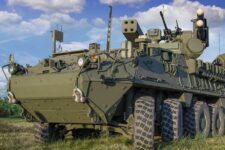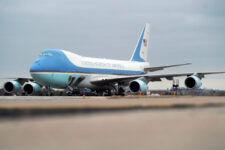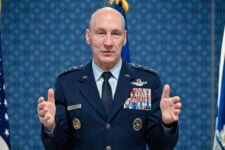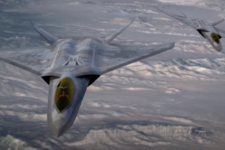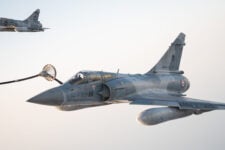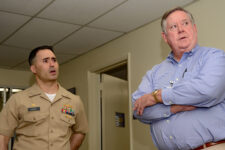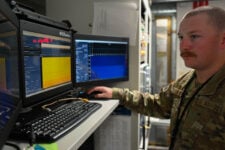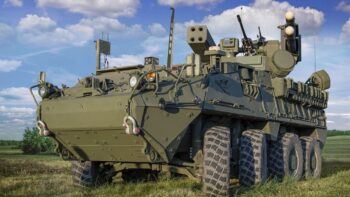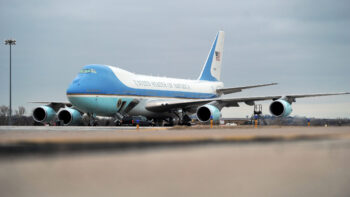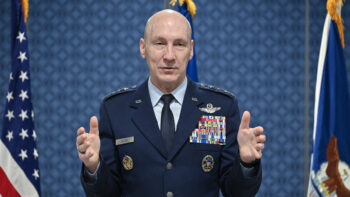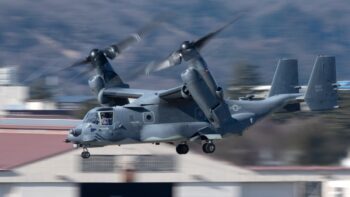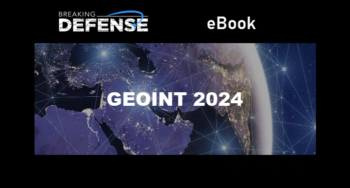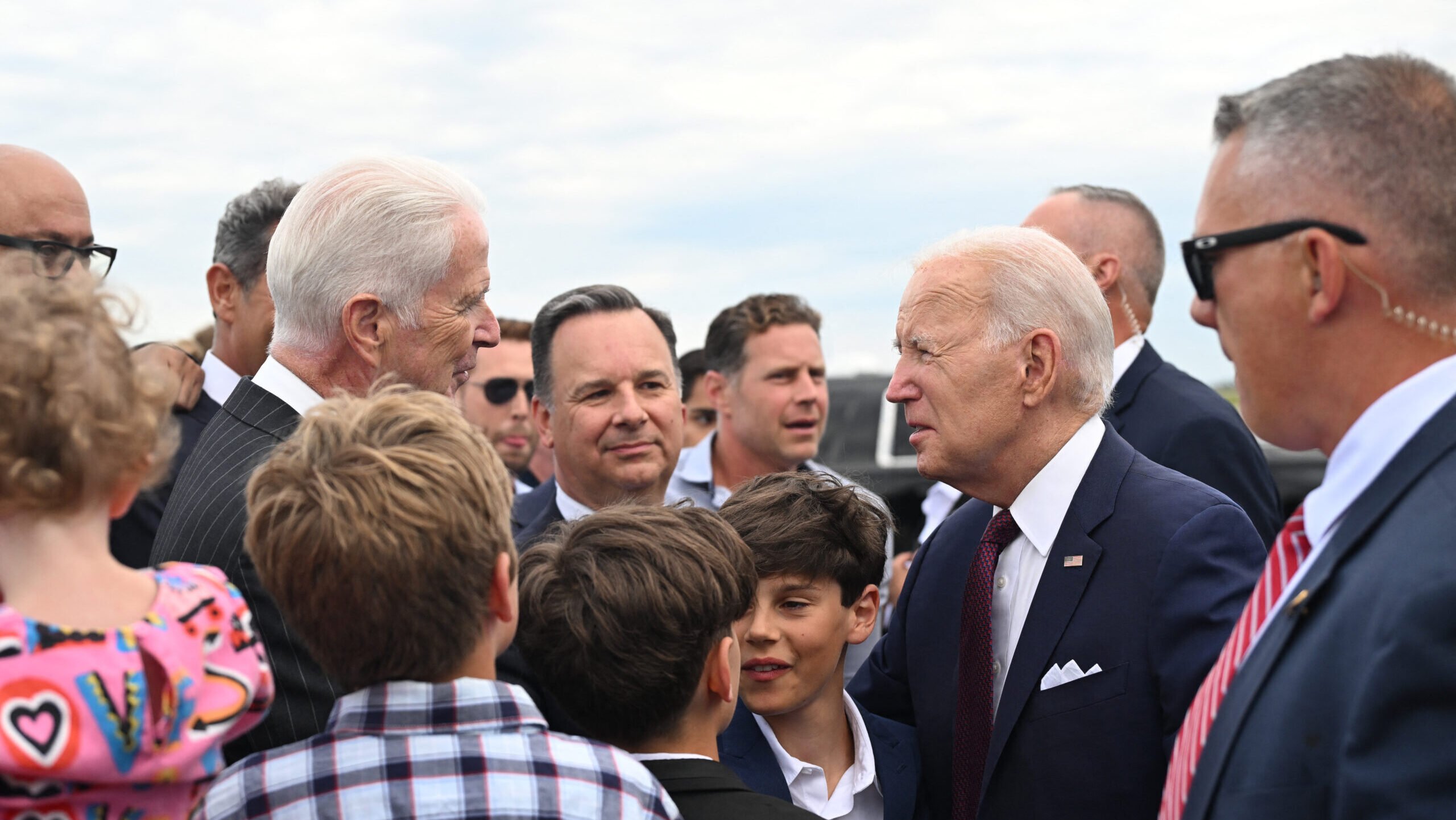
US President Joe Biden (middle right) talks to US ambassador to Finland Douglas Hickey (middle left) and embassy staff before boarding Airforce One at the Helsinki airport in Helsinki on July 13, 2023. Deputy Chief of Mission Christopher Krafft is seen at the center. (Photo by ANDREW CABALLERO-REYNOLDS/AFP via Getty Images)
HELSINKI — In September 2021, just a few months after he took up his post as defense attache at the US Embassy in Helsinki, Col. John Kent was breathing a sigh of relief after embassy staff helped coordinate a sensitive, high-level meeting between then-Chairman of the Joint Chiefs of Staff Gen. Mark Milley and Chief of Russian General Staff Gen. Valery Gerasimov.
That the face-to-face between longtime antagonists took place in the Finnish capital was no fluke; the historically neutral Nordic city has a decades-long tradition of hosting crucial summits, including Cold War dialogues between American and Soviet leaders that helped stave off a third world war. (It also was the site of the controversial 2018 meeting between then-US President Donald Trump and Russian President Vladimir Putin.)
So after the Milley-Gerasimov meeting was over, Kent thought, “Hey, that’s it. That’s our big thing we’re going to do during my three years in Helsinki.”
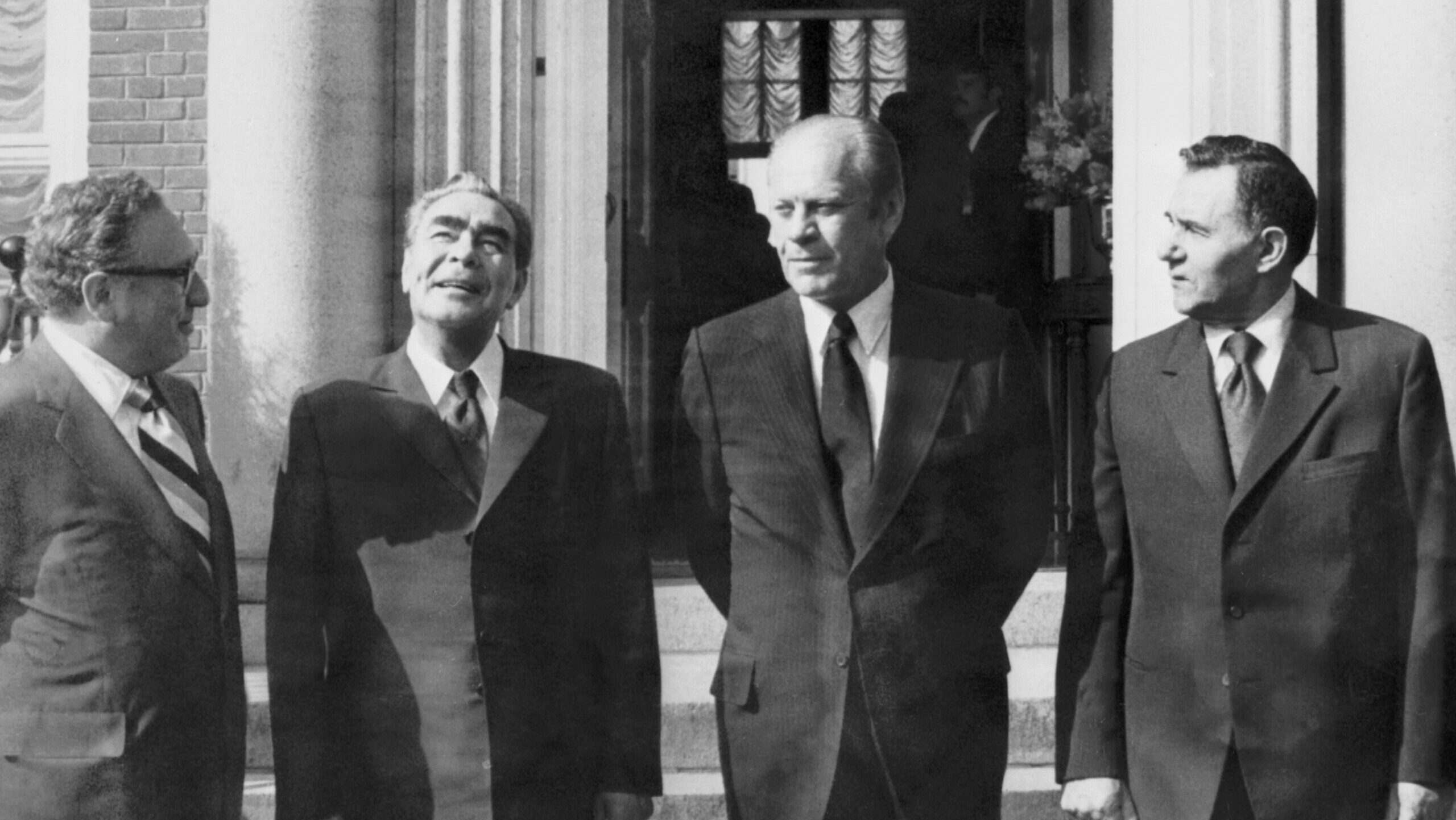
Soviet leader and general secretary of the Communist Party Leonid Brezhnev (2ndL) poses at the US embassy with American president Gerald Ford during their first private meeting on the occasion of the largest summit conference in European history gathering 35 countries in Helsinki 31 July 1975. On the left, US secretary of States Henry Kissinger and on the right Soviet foreign minister Andrei Gromyko. (Photo credit should read STF/AFP via Getty Images)
Putin, however, had other plans. His full-scale invasion of Ukraine in February 2022 galvanized the public in Finland, shattering more than a half-century of relative neutrality, pushing Helsinki to apply for NATO membership and turning the attention of Washington, and the world, to European security — especially for nations like Finland that share a border with Russia.
The result was a deluge of new activity for the US staff in Helsinki, from helping to usher Finland through the bureaucratic gauntlet that is NATO accession, to negotiating a critical US-Finland Defense Cooperation Agreement, to preparing for high-profile visits by President Joe Biden and Secretary of State Antony Blinken.
A US outpost that for so long worked in the background in service of a history-altering setting, the US Embassy in Helsinki had been called on stage. As US Ambassador to Finland Douglas Hickey told Breaking Defense, “the mission complex has changed really pretty dramatically.”
Hickey’s number two at the embassy, Christopher Krafft, likewise said when he decided in November 2021 to accept the position of deputy chief of mission in Helsinki, he did it “not really thinking that I would be in the middle of a lot of these things. And I think for all of us, we can say the same.”
“I think in the past it was a little bit more of a, ‘Hey, let’s meet in Finland’ as the US and the Soviet Union are speaking to one another,” said Krafft, who took up his post in August 2022. “Now it’s, ‘Let’s see what we can do to strengthen the bilateral relationship’ … of itself as the goal, not just utilizing Finland as a venue.”
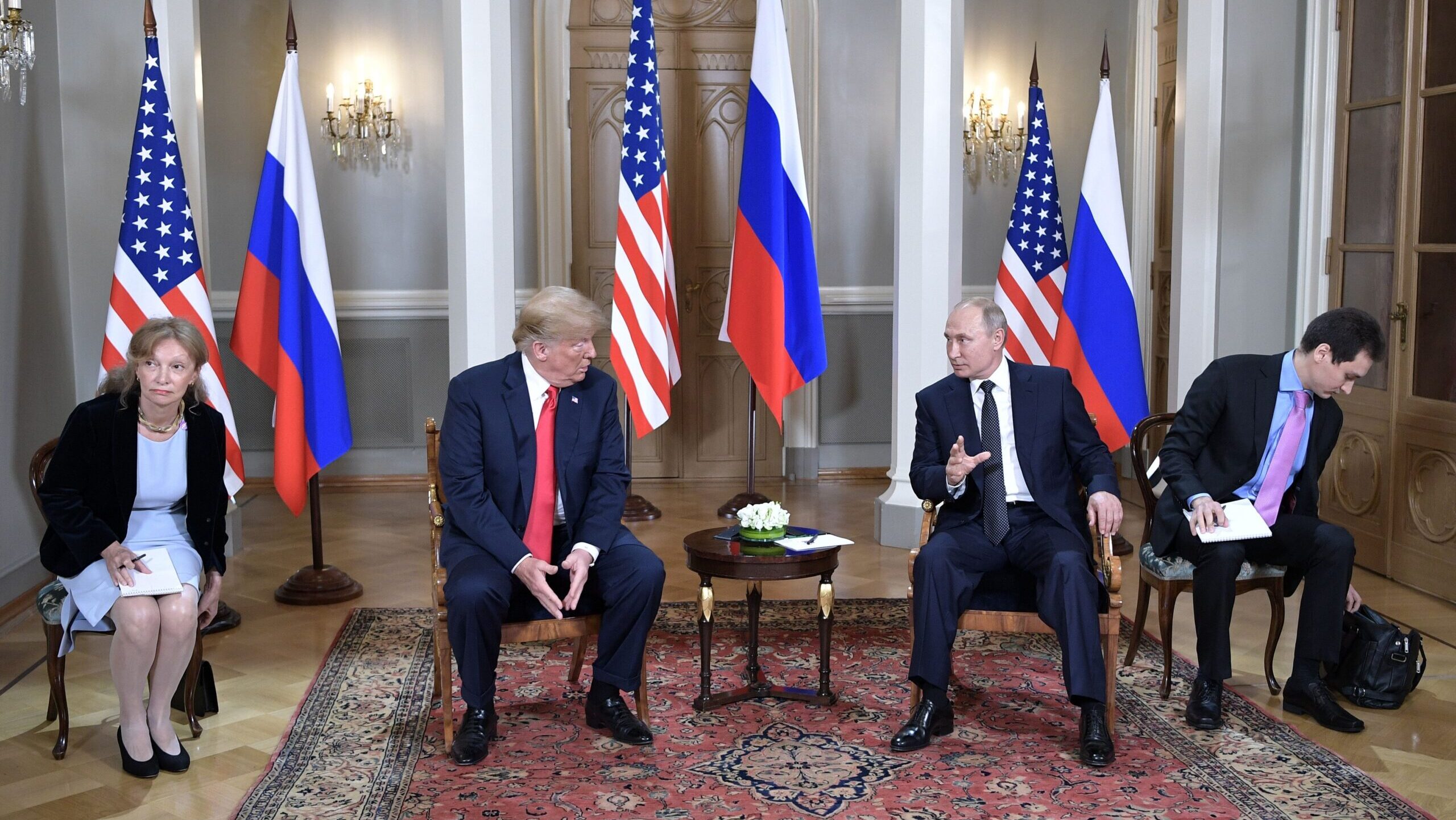
US President Donald Trump and Russia’s President Vladimir Putin wait ahead a meeting in Helsinki, on July 16, 2018. (ALEXEY NIKOLSKY/AFP via Getty Images)
Krafft, like Kent and other embassy officials, spoke to an audience from the Kaplan Public Service Foundation on May 6 in an embassy meeting room with a large window overlooking the Gulf of Finland in the Baltic Sea. St. Petersburg, Russia, sits 180 miles due east. (Breaking Defense accepted accommodation from KPSF in Finland.)
Hickey was quick to point out that the US Embassy in Helsinki had always done more than arrange summits and said to suggest otherwise would be a disservice to the ambassadors and staffers who came before.
“I think my predecessors did great jobs here in Finland, and it was more than just orchestrating meetings,” he told Breaking Defense in a video interview last week. He also emphasized that the US staff does much more than handle defense-related issues, and has worked closely with the Finns in the field of advanced technology, including quantum and artificial intelligence. “So I think that [the military side] has taken up a lot of space, but you know, we can do multiple things, and have.”
But, he said, after Russia’s invasion, “Since I got here [in April 2022] … we’ve been focused on a lot of military issues, for sure.”
The military issues, too, go back decades, as Kent noted. In the 1990s Finland decided to purchase US-made F-18 Super Hornets, an upgrade from their Soviet-made MiGs. (Finland’s former chief of defense and current lawmaker, Jarmo Lindberg, was among the first Finns to fly the F-18 in the Finnish air force.)
“That was kind of the first long-term relationship that guaranteed the US and the Finns were going to work together for 30 years,” the defense attache said. “That was kind of the start of it.”
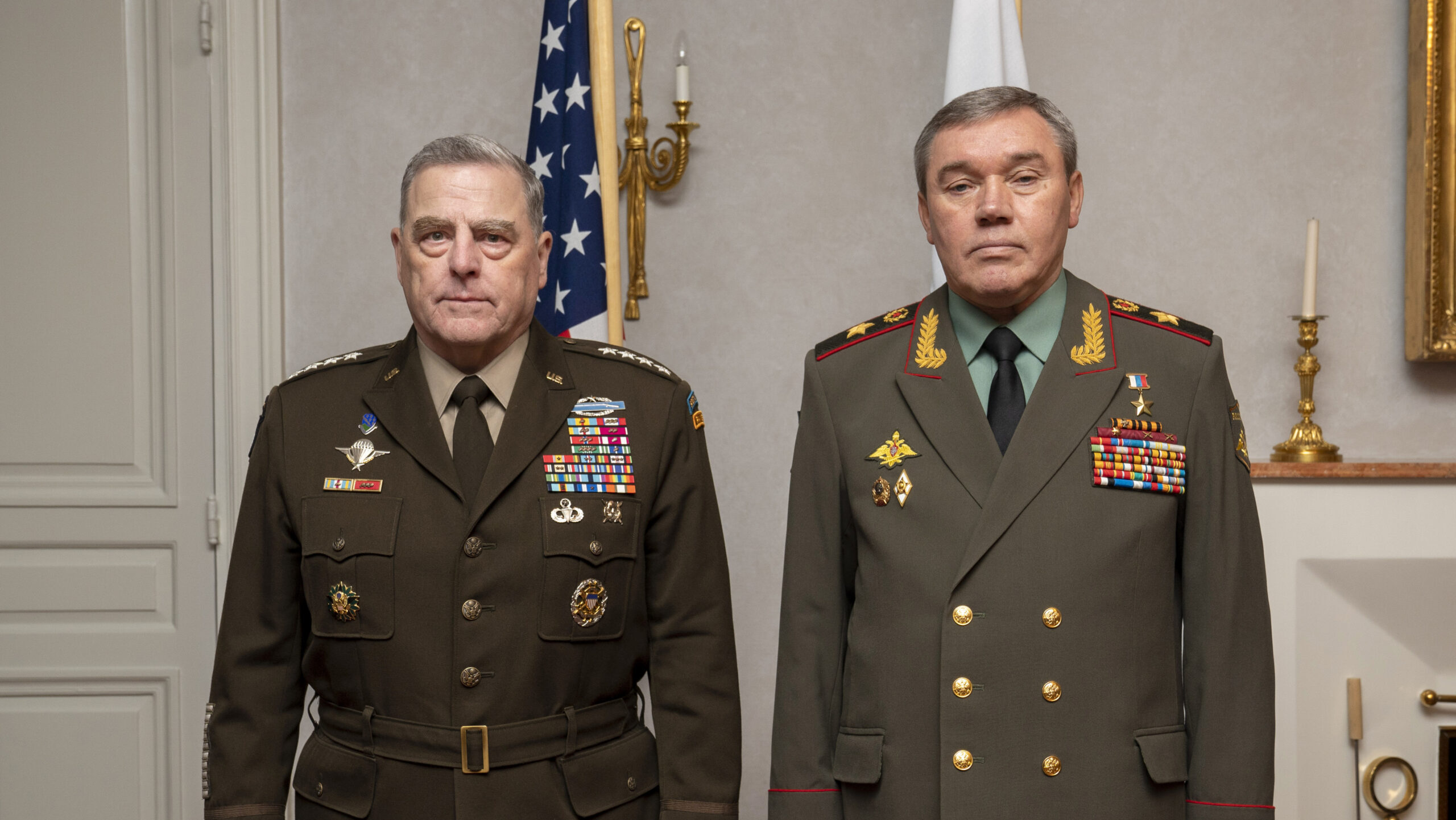
Chairman of the Joint Chiefs of Staff Gen. Mark A. Milley meets with Chief of Russian General Staff Gen. Valery Gerasimov in Helsinki, Finland, Sep. 22, 2021. (DOD photo by U.S. Army Master Sgt. Chuck Burden)
More recently, in 2021 Finland announced a massive purchase of more than 60 Lockheed Martin-made F-35 fifth-generation fighters for a staggering $11 billion — a purchase Kent said the US is “really excited” about because it helps “guarantee that longterm relationship between Finland and the United States in the defense sector.”
Currently, a major priority for the embassy and Finnish foreign and defense ministry officials is the parliamentary ratification of the Defense Cooperation Agreement with the US, which was signed in December 2023 and would draw the two militaries significantly closer, including the potential for pre-positioning of US stocks in Finland. The US has or is in the process of finalizing Defense Cooperation Agreements with all the Nordic nations.
Beyond easing day-to-day military cooperation and exercises, for Finnish officials, the agreement means the US would be essentially on speed dial, that much faster to respond to any Russian incursion.
“When you sum it up … [it’s] basically about making it possible for Finland and the US, if we like and if we agree together, to act quickly,” Mikael Antell, deputy director general of the Finnish Foreign Ministry’s political department, told the KPSF group. “We all know NATO is a fantastic organization, but it’s a political organization and things can sometimes take time.”
Hickey said he understood why the DCA is so important to the Finns.
“You know, it’s always easier to deal with one partner than 31 other partners,” he said, describing the DCA as “complimentary” to Finland’s NATO membership.
Finnish officials said they expect the agreement to be ratified by parliament before the year is out. From there, the US-Finnish relationship is likely only to grow closer, with the staff of the US Embassy in Helsinki front and center.
“That’s been a process that’s been going on for 30 years, but I would say it’s changed,” Hickey said. “The scope has changed for sure, right?”
Meet Sergeant Stout: Army gives Stryker-Based M-SHORAD a proper name
As the service rolls out a name change for the new(ish) air defense weapon, it is also eyeing future upgrades that could integrate with robots and new interceptors.
